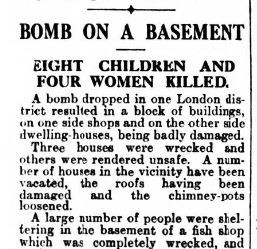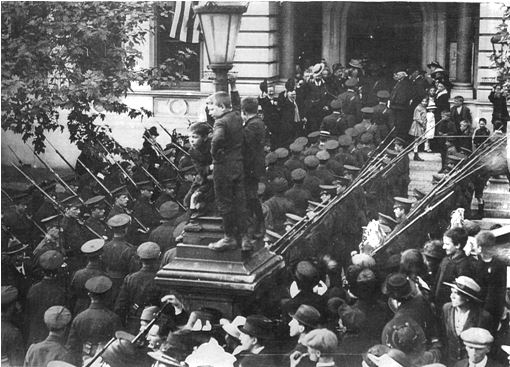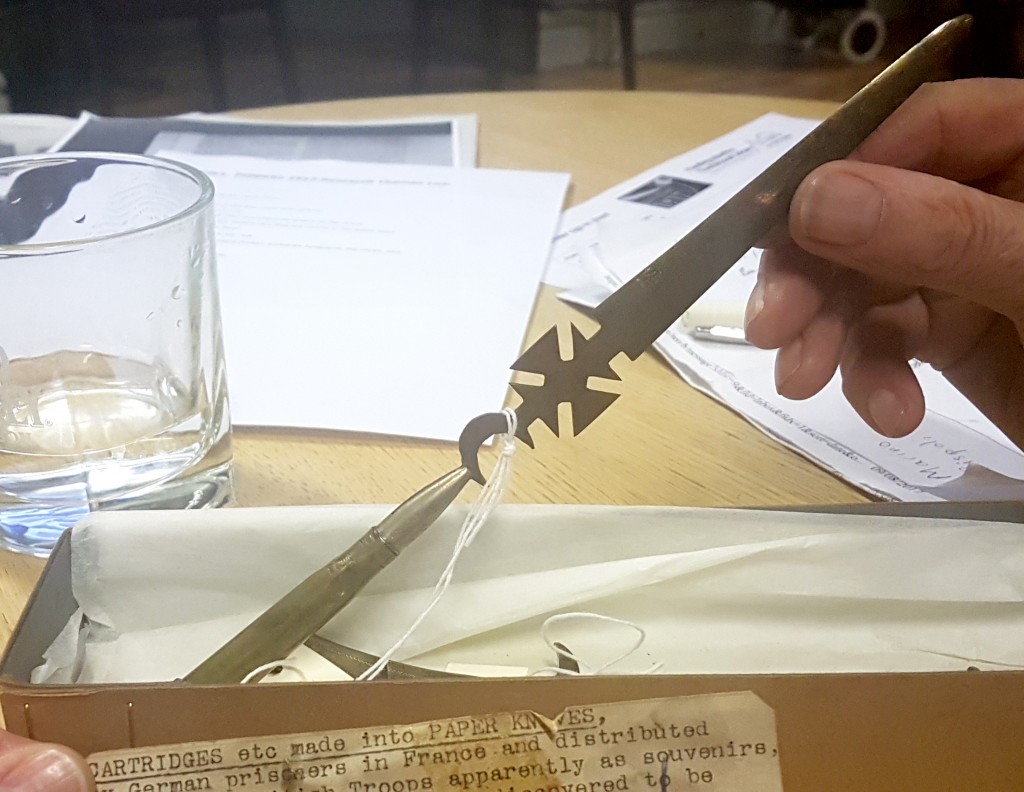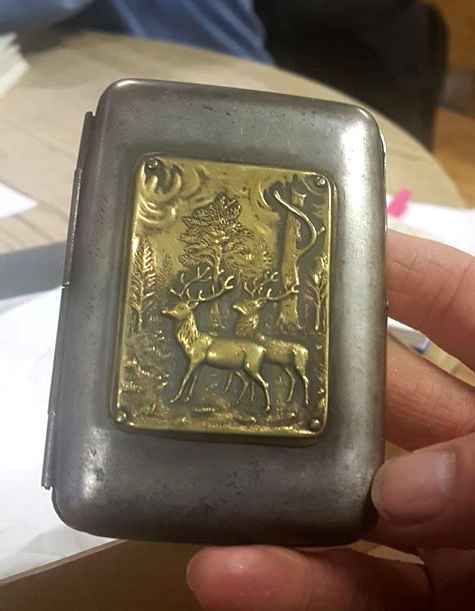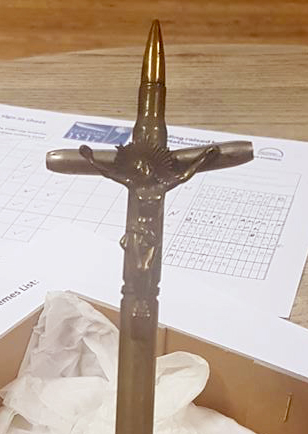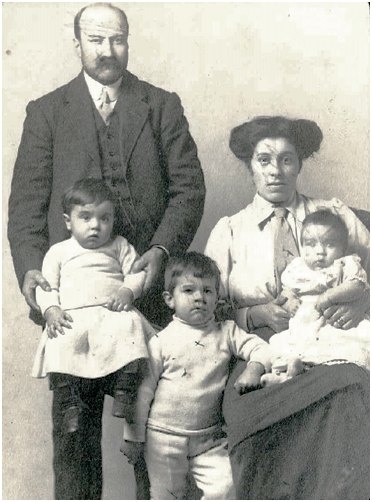Along with over 60 others, I set out on the afternoon of Saturday 21st October for a breezy walk around Burgess Park, to find out more about what happened 100 years ago on Friday 19th October 1917, when the Zeppelin bombing raid struck over Walworth, South-east London. The event took the shape of an animated walk – the narrator guides walkers around significant points in the park where actors play out the voices of people caught up at the time of the Zeppelin strike. If you missed the event itself, an audio version will be available soon as a podcast.
John Whelan, the project lead, narrated the events, and one of the first things we learned was that the weather was very similar on that night, with a heavy, gusting wind that meant the Zeppelins were not heard until they were almost overhead – the Silent Raid.
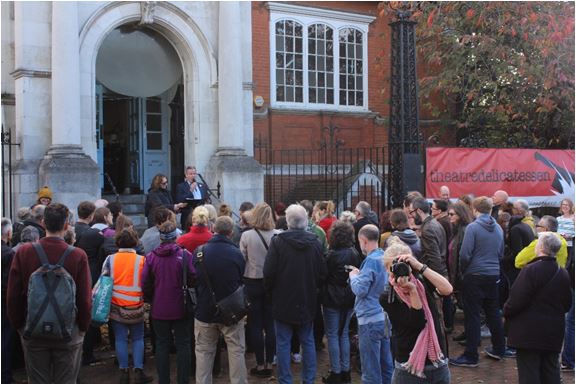
The first ‘Voice from the Past’ was the Zeppelin commander, Kapitänleutnant Waldemar Kölle, who gave an account of the long flight from Germany. The Zeppelin flight was affected by the wind, getting blown off course – they were aiming for the northern industrial city of Sheffield – and had to climb higher into the freezing atmosphere to avoid gunfire from British planes. Kölle praised his gallant crew who were frozen and tired yet stayed at their posts – but it was hard to see what alternative they had! Eventually, after crossing London and dropping it’s bombs, on its way back to base, the Zeppelin ran out of fuel, crash-landimg in France where the crew were taken prisoners of war.
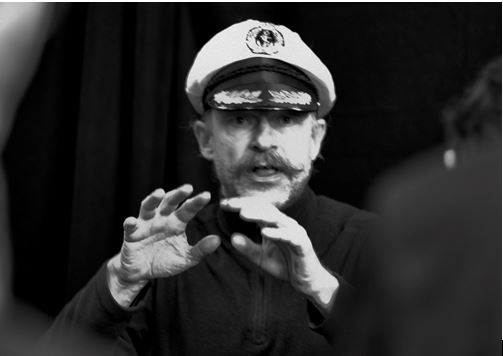
We heard more Voices from the Past – some of the people involved in the war effort: the so-called Canary Girls, whose skin and hair turned yellow due to the chemicals they were working with in the munitions factories; the newly-introduced air-raid warden – issued with a whistle to warn people to take cover! And from the reporter restricted in what could be published by the all-encompassing ‘Defence of the Realm Act’ (DORA).
Over the course of the afternoon we had sunshine, while listening to the Voices from the Past of the conscientious objectors, who had to defend their position in court, many of whom were imprisoned during the war…

… and also rain, as we heard the Voices from the Past of distinguished visitors who came to see the bomb-site at Calmington Road and talk to the survivors, no less than the Prime Minister of day, David Lloyd George and their majesties King George V and Queen Mary.

The most poignant part of the walk for me, was when we reached the actual spot where the bomb fell, at what used to be the junction of Calmington Road with Albany Road.

The photographs of the victims on the railings and the sad stories of those who died, those who survived but lost children, or were affected for the rest of their lives, really brought home the grim reality of civilian deaths in wartime.
One of the most moving aspects of the whole project was the involvement of the families of the victims and survivors of the bombing raid. We were able to meet with the siblings and descendents of both the Balls family, who lost two members, and the Glass family, who lost four. Greta and Peter, younger sister and brother of Eddie and Sonny Balls (pictured far right on the railings above) attended the opening of the season on 7th October (see report here). Barbara, daughter of Jesse Glass and granddaughter of Emma Glass (pictured far left, above) attended both the opening and the animated walk, travelling with members of her family to London from St Leonards.

The whole family found the exhibition and walk very informative and moving. Many people involved in the war didn’t like to dwell on the suffering and so details were often not discussed with family members in the aftermath. Mark (grandson of survivor Jesse Glass) wrote to us after the animated walk very movingly:
‘…after only really having to hand over the years the details that my Nan could feel at ease with discussing …. it all feels quite surreal, and indeed on a personal level even overwhelming at the moment, to suddenly be receiving so much information in one go.’
‘Auntie Barbara seeing for the first time what her Nan, and her Aunties & Uncle, actually looked like was quite an experience …’ ‘… for Auntie Barbara … watching someone play her injured Mother who was calling out in the darkness to her own Mother … for us this was, very understandably, to be the most emotive experience of the day.’
‘My heartfelt appreciation to you and your colleagues for all your hard work’
Well done to John Whelan and all the actors and project volunteers who put together a vivid and moving portrayal of the events of the Zeppelin raid 1917. If you missed the walk itself, the soundtrack will be available shortly as a podcast for download or listening online. Please visit our newly-launched podcast pages now to listen to our archive of previous talks, and if you subscribe to the series in your podcast app (for free), you’ll receive the new Zeppelin episode automatically (as well as any episodes in the future) as soon as it’s published in the next few weeks.
Posted by Helen Crisp, 26th October 2017; additional details, 15th November.
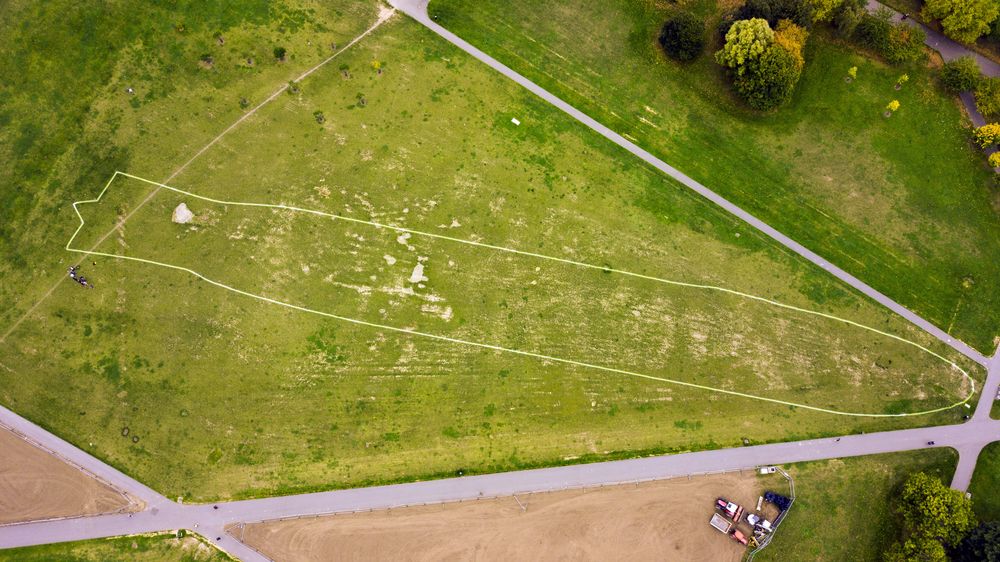
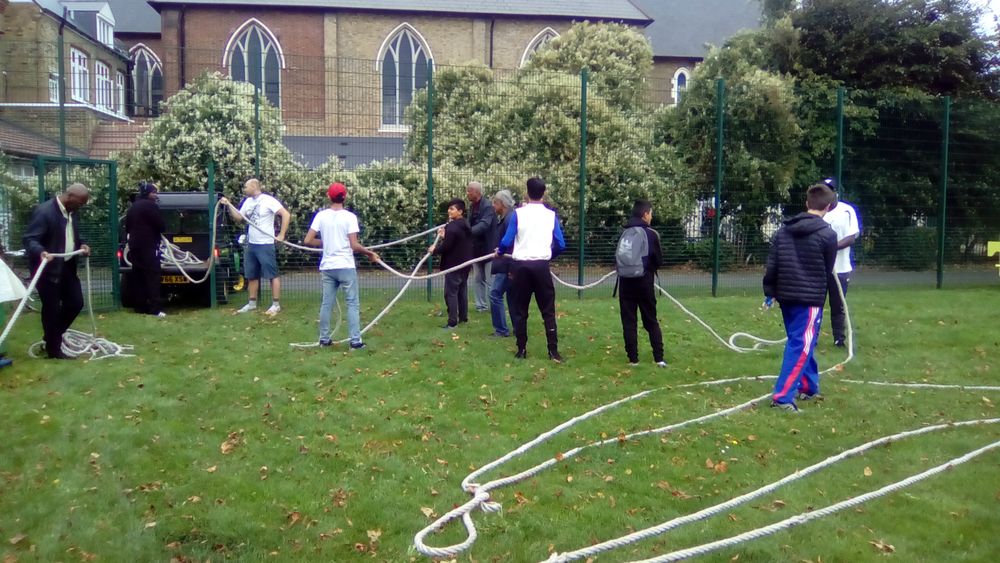
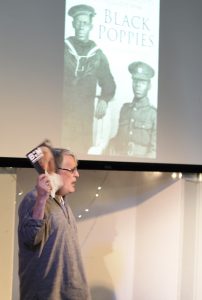
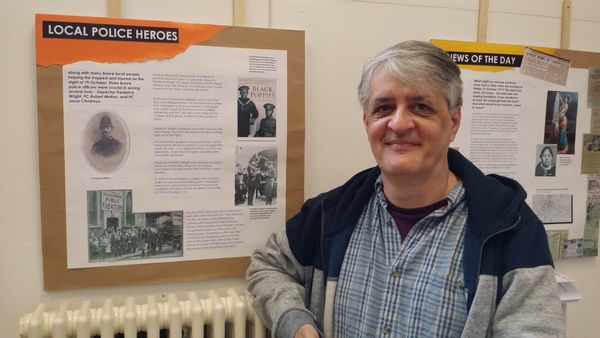
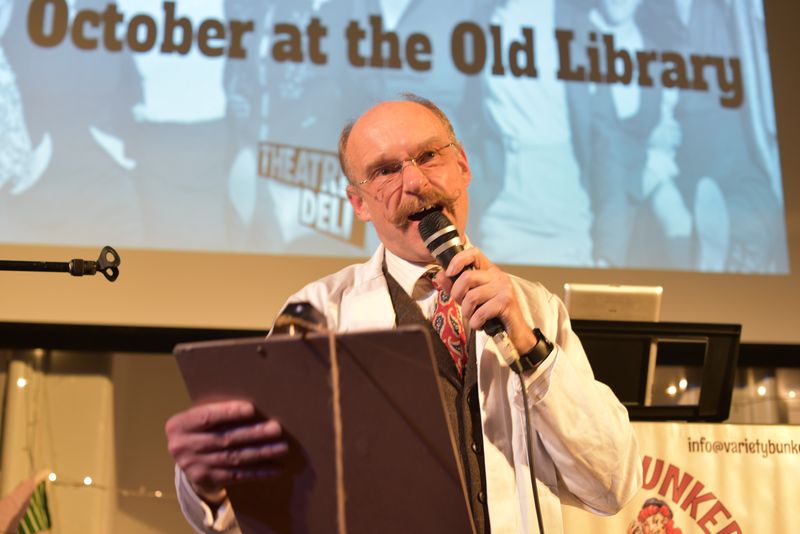
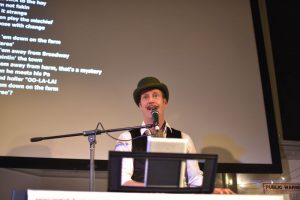
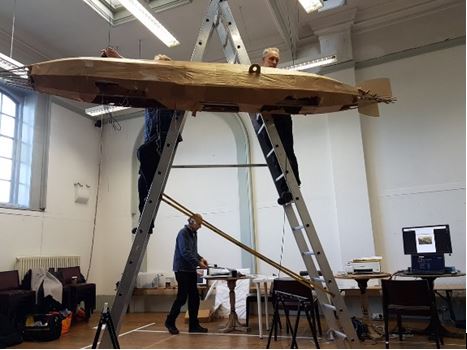
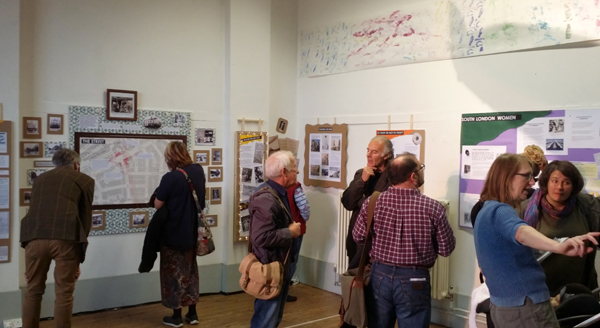
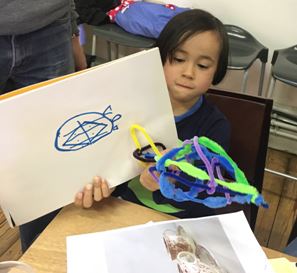
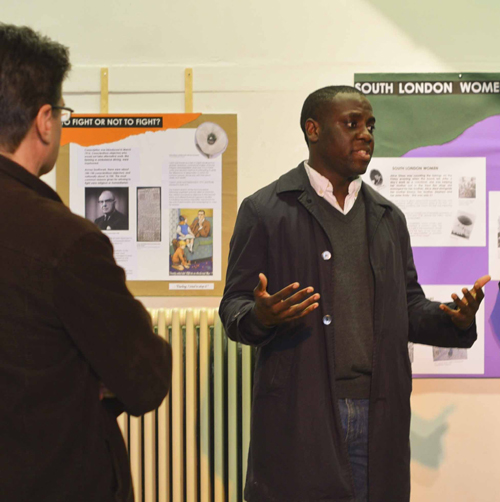
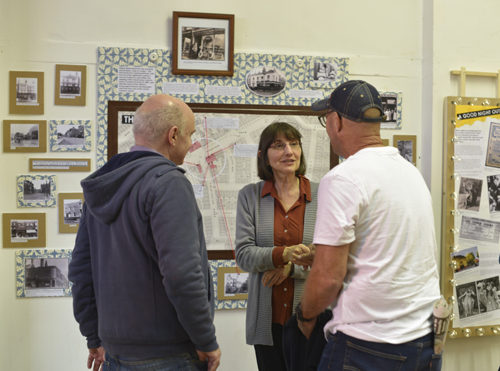
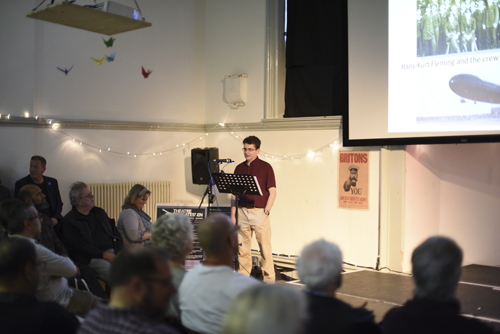
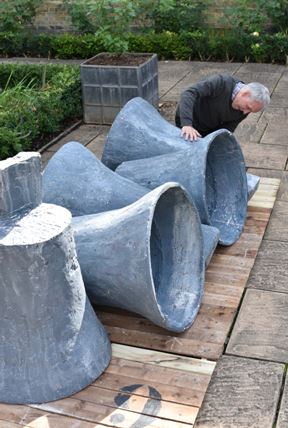


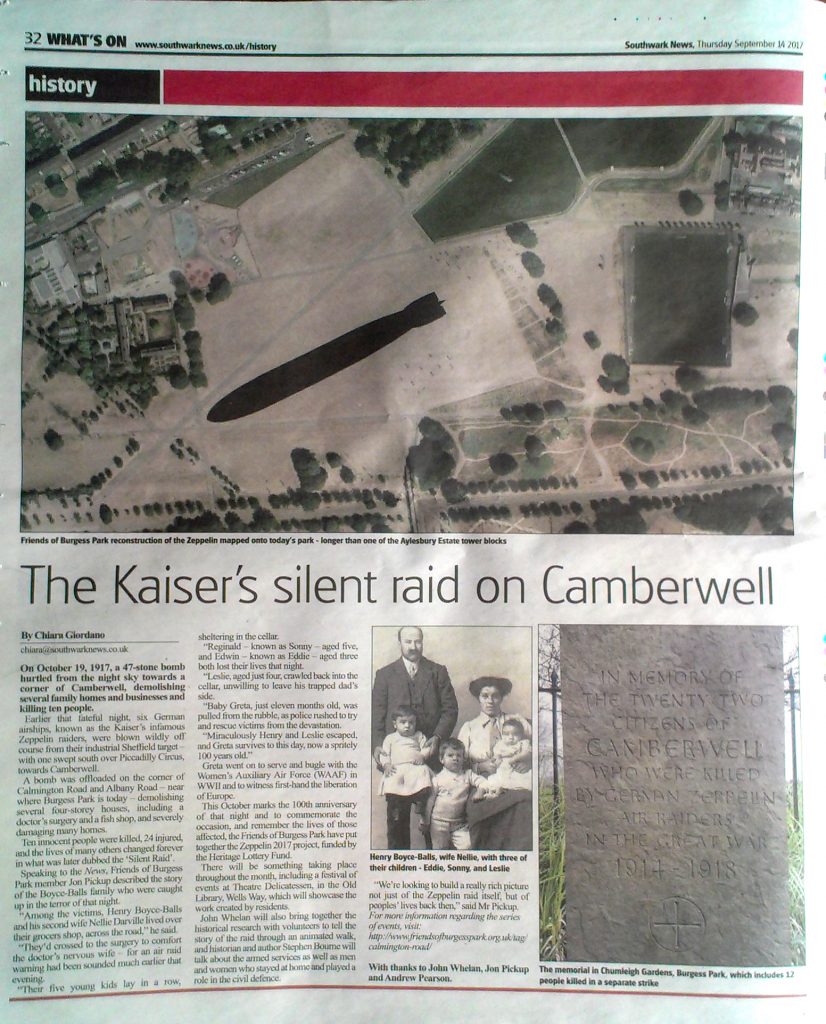

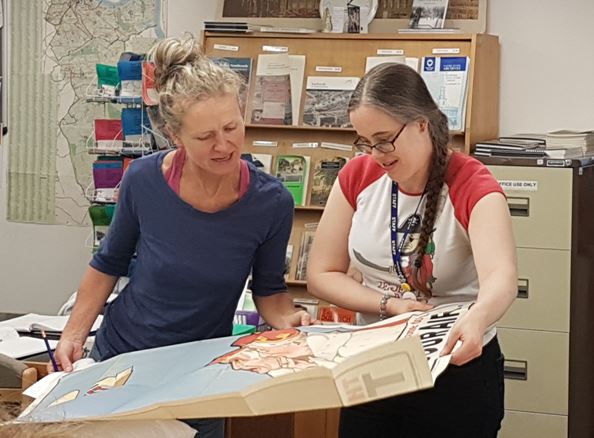
 What a wonderful time we are having exploring the history and heritage of WW1 and the Zeppelin Raid on Calmington Rd in 1917! Our third volunteer session was late afternoon on Monday 4th September. The team at the IWM (Imperial War Museum) have been so supportive of the project, they have helped and encouraged us every step of the way. It was an amazing session that really animated the history and showed so many ways we could use the resources and talents of this wonderful Museum.
What a wonderful time we are having exploring the history and heritage of WW1 and the Zeppelin Raid on Calmington Rd in 1917! Our third volunteer session was late afternoon on Monday 4th September. The team at the IWM (Imperial War Museum) have been so supportive of the project, they have helped and encouraged us every step of the way. It was an amazing session that really animated the history and showed so many ways we could use the resources and talents of this wonderful Museum.

